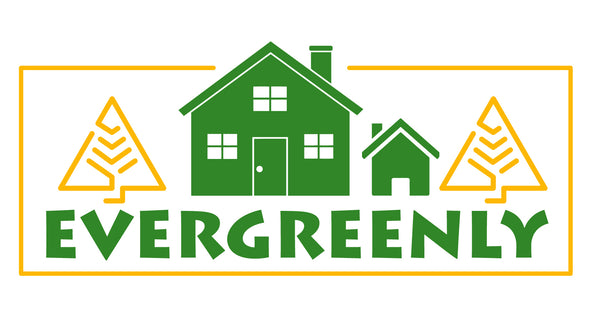Z-Wave is a wireless communications protocol (e.g., Bluetooth or Wi-Fi) that is primarily used for home automation and is best known for its interconnectivity (compatibility between different manufacturers, products, product variants, and so on), security, and ability to operate outside of your Wi-Fi network.
Z-Wave was originally designed as a lighting control technology before becoming one of the most popular home automation technologies. Since then, Z-Wave has evolved into much more, and it can now be found in thermostats, light switches, wall plugs, outlets, sensors, and other smart home devices.
Z-Wave is a technology that allows devices to interact, similar to how your smart TV connects to your router to access the internet via Wi-Fi or how your phone connects to your wireless headphones to listen to music using Bluetooth. Z-Wave is a wireless technology that transmits data, automates tasks, and more to power your smart home.
Large protocols need rules and restrictions for how they are constructed. For Z-Wave, such regulations are defined and maintained by the Z-Wave Alliance, which certifies every smart home device that uses the protocol in order to assure compatibility (or "interoperability," as Z-Wave puts it) across different firmware versions. To put it another way, if you buy a Z-Wave device from 2005, it should still work with a device from 2021, and vice versa. Furthermore, a Z-Wave device from Manufacturer A should operate with a Z-Wave device from Manufacturer B, and vice versa, allowing you to avoid being trapped into a single manufacturer's ecosystem.
How does Z-Wave work?
Z-Wave creates a mesh network of devices by using a dedicated hub/gateway (e.g., SmartThings, Hubitat, etc.) to communicate with each other on a lower frequency, 908.42 MHz (whereas your Wi-Fi operates on either the 2.4 GHz or 5 GHz band). Small data packets are sent to and from the hub across the mesh, allowing it to have a greater range and speed than competing protocols.
Looking at one of the key differences between Z-Wave and Wi-Fi, we can see that, unlike Wi-Fi, which weakens as you go further away from your router, Z-Wave, if designed properly, can distribute the signal equally across your house and even beyond by using its mesh technology.
Understanding Your Z-Wave Network
Once you grasp the vocabulary and architecture, getting started with Z-Wave is actually pretty straightforward. When a device is added to the network for the first time, the hub assigns it a Node-ID. Furthermore, the device informs the hub about the device's kind (e.g., battery or mains powered, light switch or bulb, etc.). The hub then builds an internal map with optimum routes to and from each device, and every time a device is added or deleted, the hub refreshes that internal map, as well as refreshing at specific intervals to account for shifting nodes.
What are the Benefits of Z-Wave
Z-Wave has three primary advantages: it's one of the most secure protocols on the market 2, its radio signals run outside of the 2.4GHz and 5GHz bands (so they won't interfere with your Wi-Fi signals), and it's one of the most robust firmware protocols.
Z-Wave technology is used in 90% of residential and commercial security devices (Alarm.com, Honeywell, 2GIG, ADT, Nexia), allowing Z-Wave to outperform all other technologies in this space 2. Without going into too much detail, Z-Wave uses AES-128 encryption to protect data transmissions, making it impossible to crack the encryption key using "brute force" via a supercomputer in one billion years
3.S2 (Security 2) was released by Z-Wave in 2017, which further safeguards devices throughout the inclusion process.
Wi-Fi bandwidth is more crucial than ever before, especially today. Netflix might be streaming, Amazon music could be playing, several phones/tablets could be accessing the web, and many other smart gadgets could be connected to your network at any same time. The last thing you want is for hundreds of smart home gadgets to be connected at the same time, potentially generating traffic congestion.
Because Z-Wave is one of the few main protocols that can function outside of the 2.4GHz and 5GHz bands (908.42 MHz in North America, 868.42 MHz in Europe), you can run your smart home on a different frequency than your Wi-Fi network.
Z-Wave chose to make compatibility the protocol's backbone, ensuring that Z-Wave enabled devices should operate together effortlessly regardless of the manufacturer or year they were manufactured. Interoperability is one of the protocol's fundamental concepts and one of Z-Wave's characteristics. Because this is a well-established protocol, manufacturers can do a lot to provide customers with a wide range of customization choices.
Z-Wave, as you might expect, has a number of advantages, including security, robustness, and the fact that it is a well-established protocol, making it one of the most popular options in home automation. However, because it is not as widely used as Wi-Fi and Bluetooth, it is likely not on most people's radar. Hopefully, this post has shed some light (pun intended) on the topic of Z-Wave. We'll make sure to provide a more in-depth blog that walks you through the routine in greater detail.


